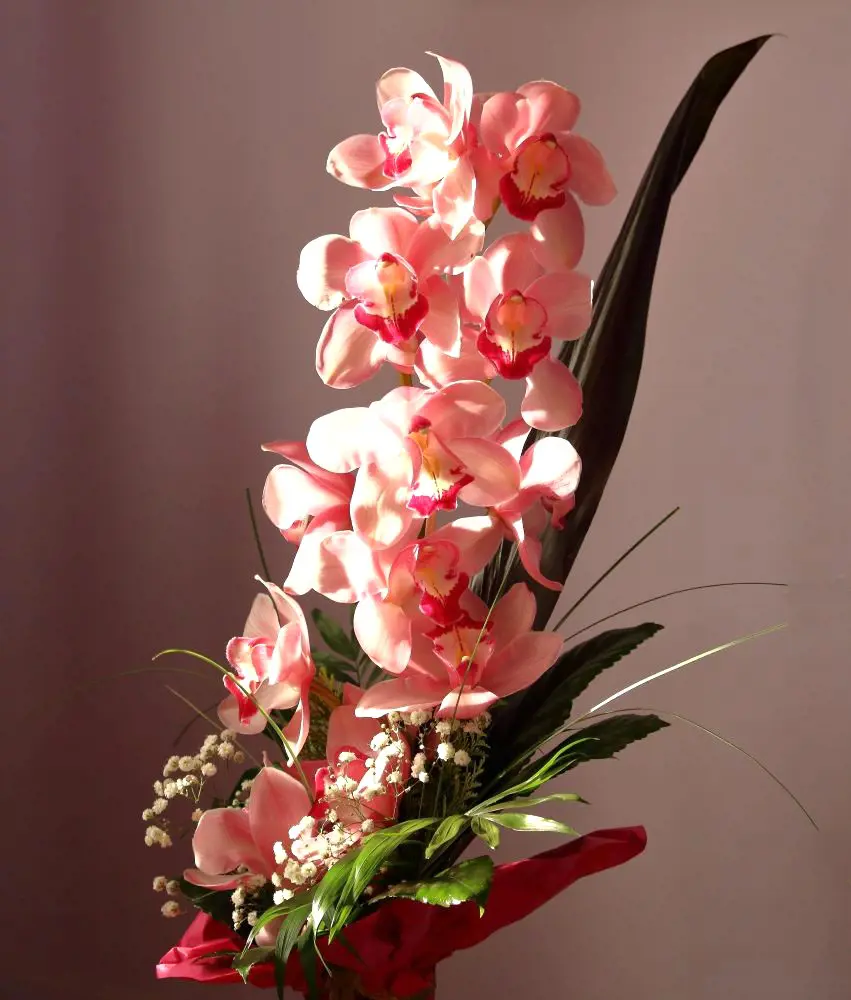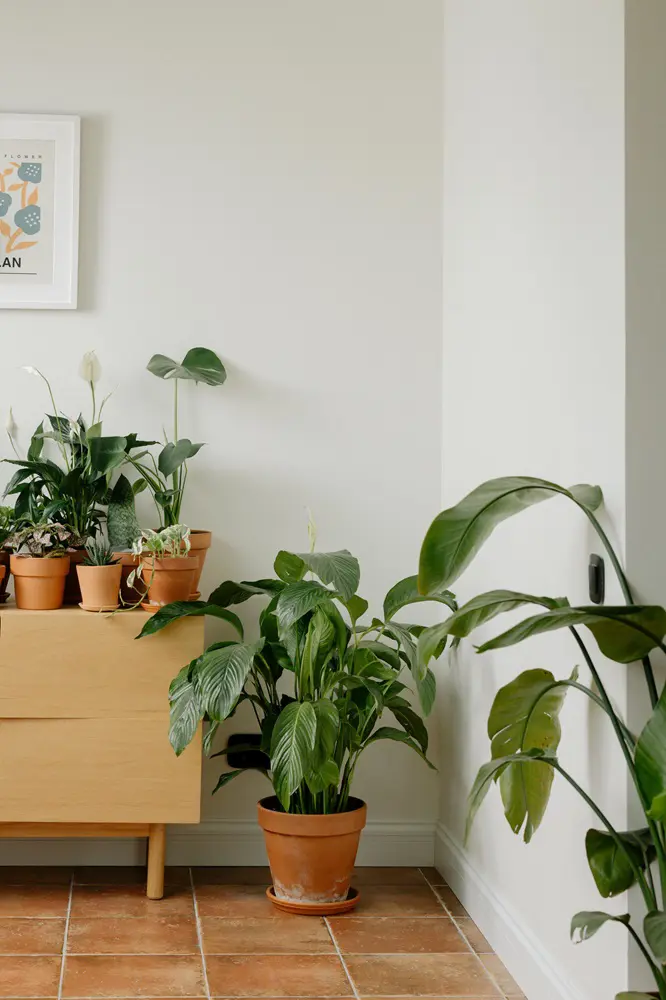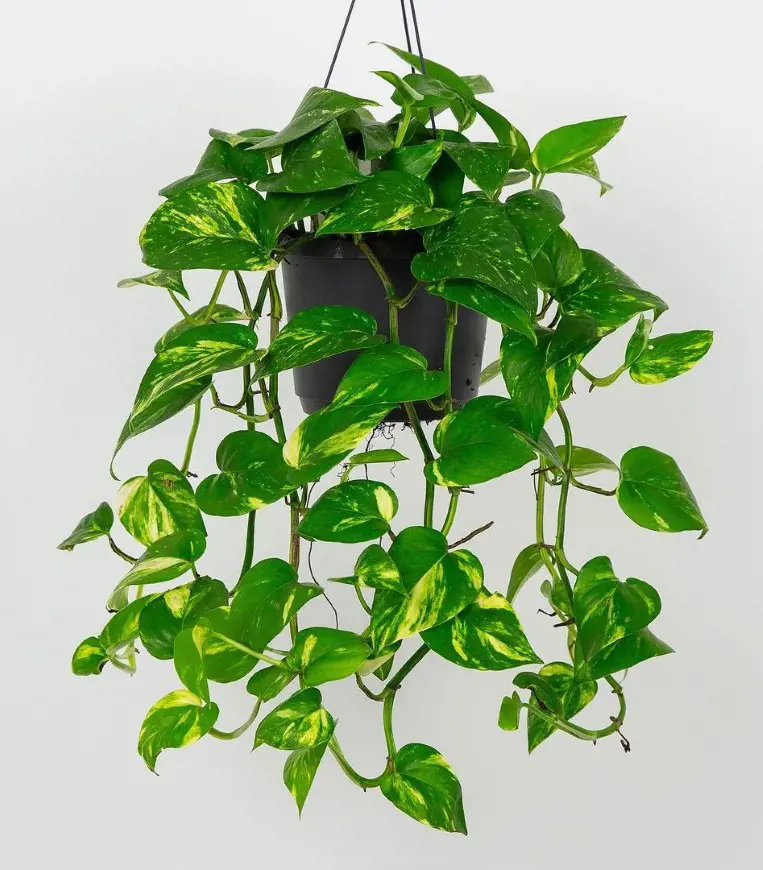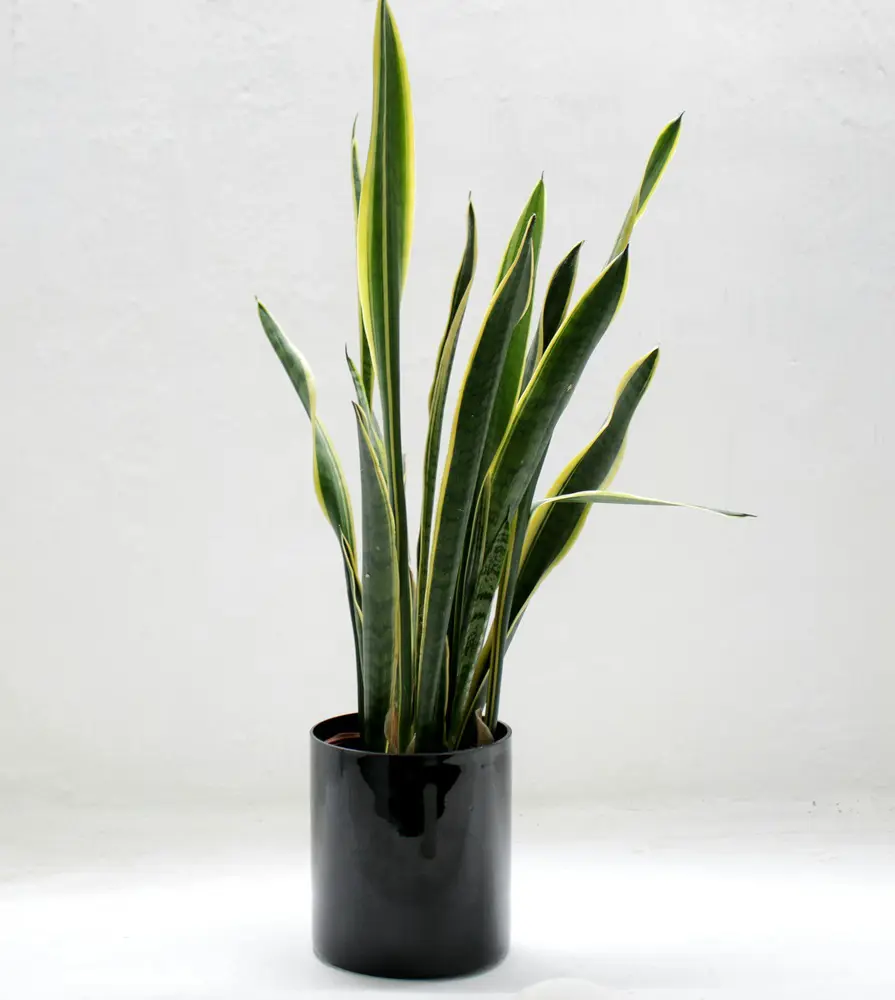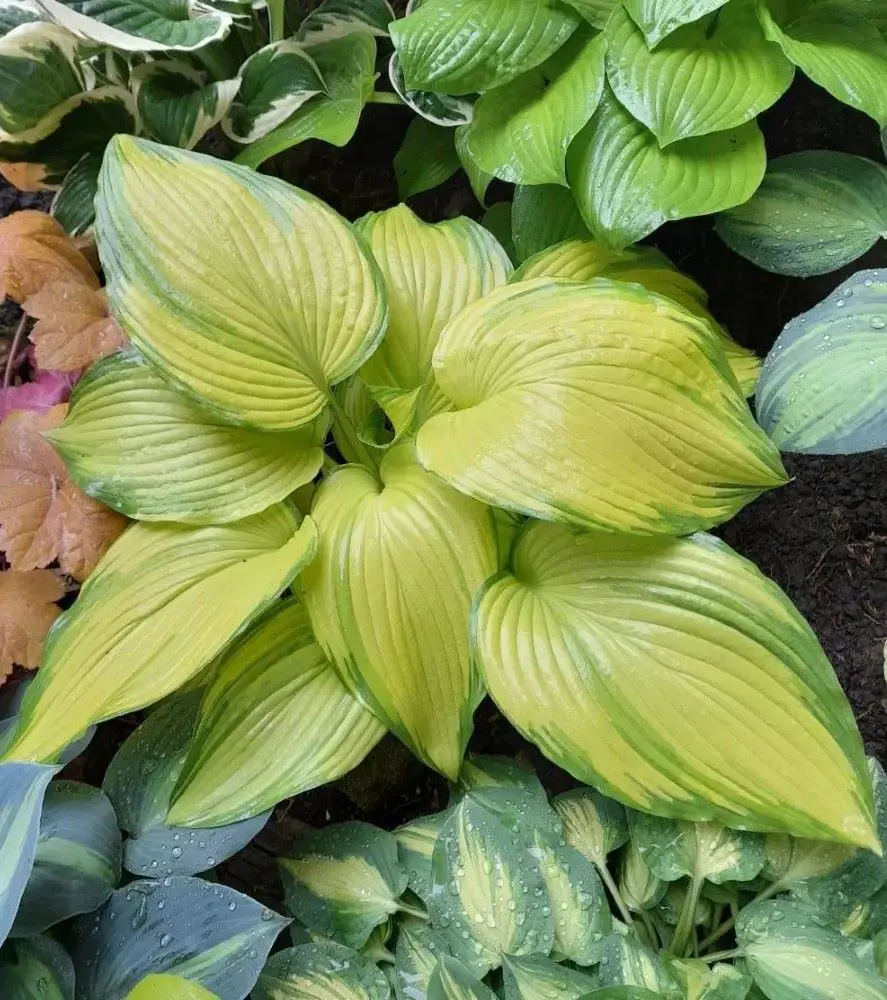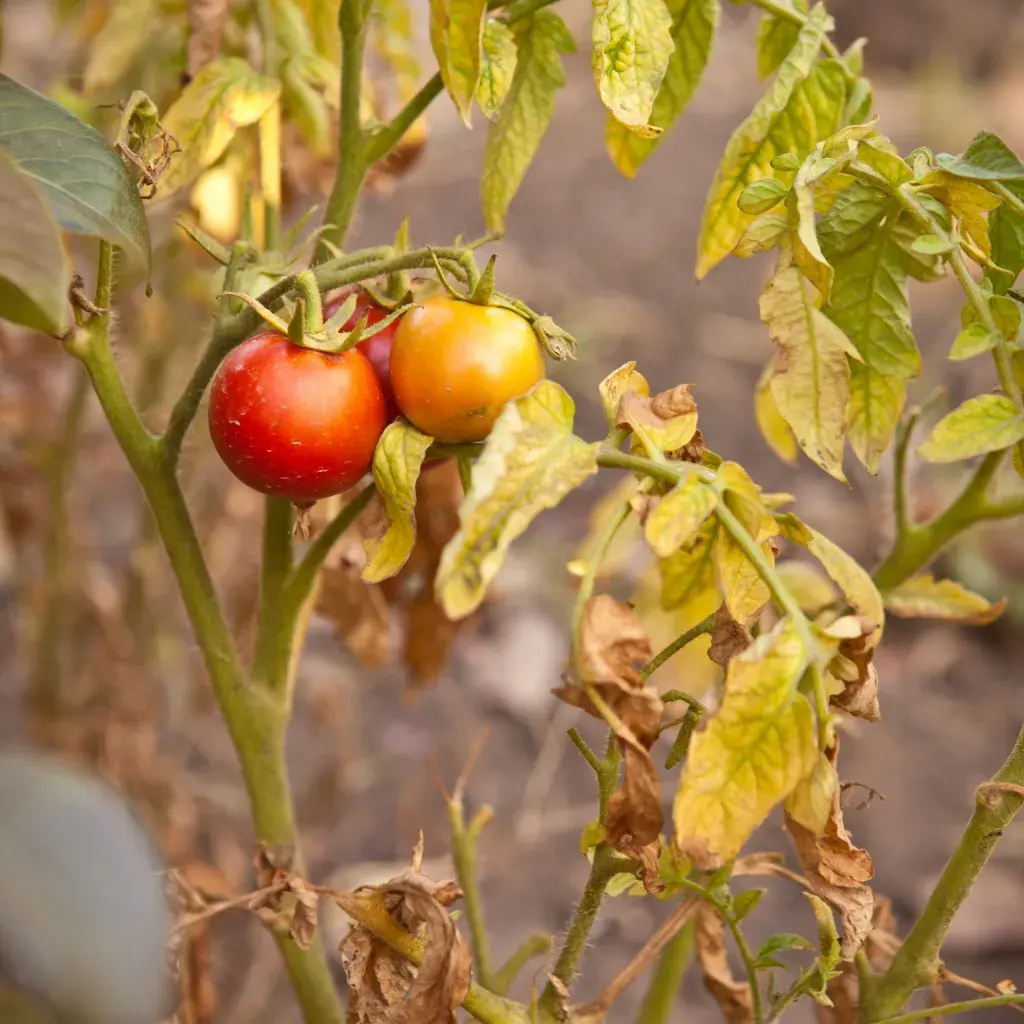How To Plant, Grow and Care Majesty Palm
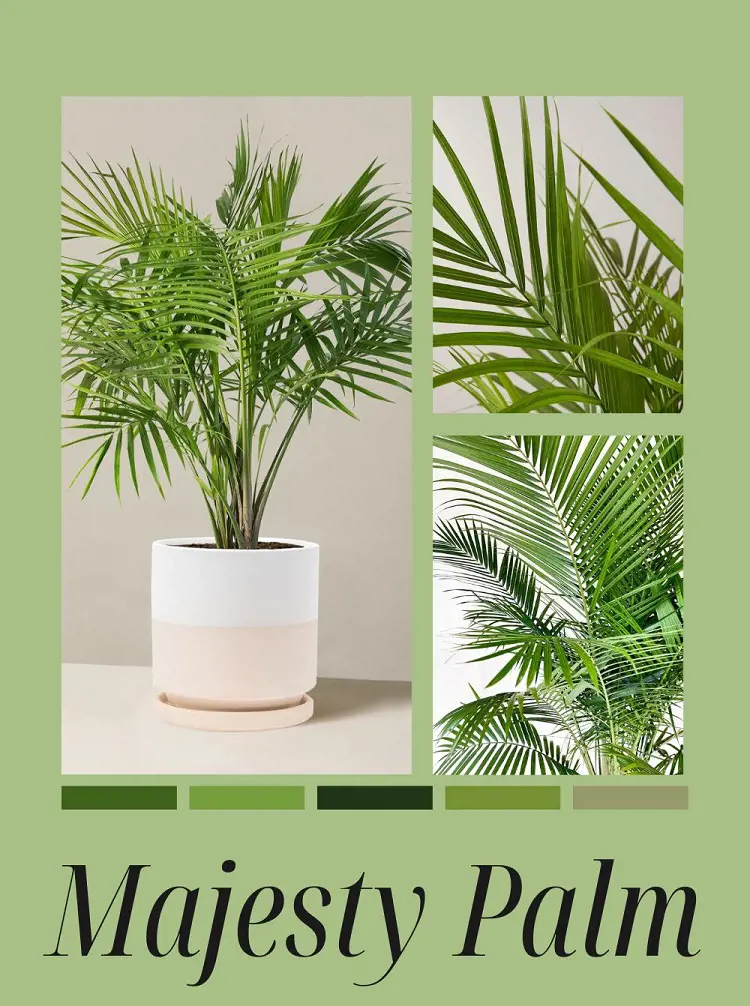
This post may contain affiliate links. If you make a purchase through links on our site, we may earn a commission.
The majestic palm, scientifically known as Ravenea rivularis, makes for a stunning indoor tree with its lush and grand fronds.
Originating from Madagascar's river banks, this resilient houseplant is cherished not only for its beauty but also for its manageable growth, making it suitable for smaller indoor areas.
With the right care, the majesty palm can grow around a foot annually. This article provides practical insights into growing and caring for majestic palms, enabling you to enjoy their luxurious charm for an extended period.
Majesty Palm Care

Given its elegant, long green fronds, it is understandable why this plant is a favorite indoor palm tree.
Any interior space would be enhanced by the Majesty Palm. Even though they are thought to be difficult plants to maintain, it is well worth the effort to learn how to take care of them.
There is a perception that Majesty's palms can be temperamental plants. If you are a new indoor gardener, kente palm, bamboo palm, or parlor palm are usually better options.
Here's how to grow majesty palms along with a guide to care for them:
Light
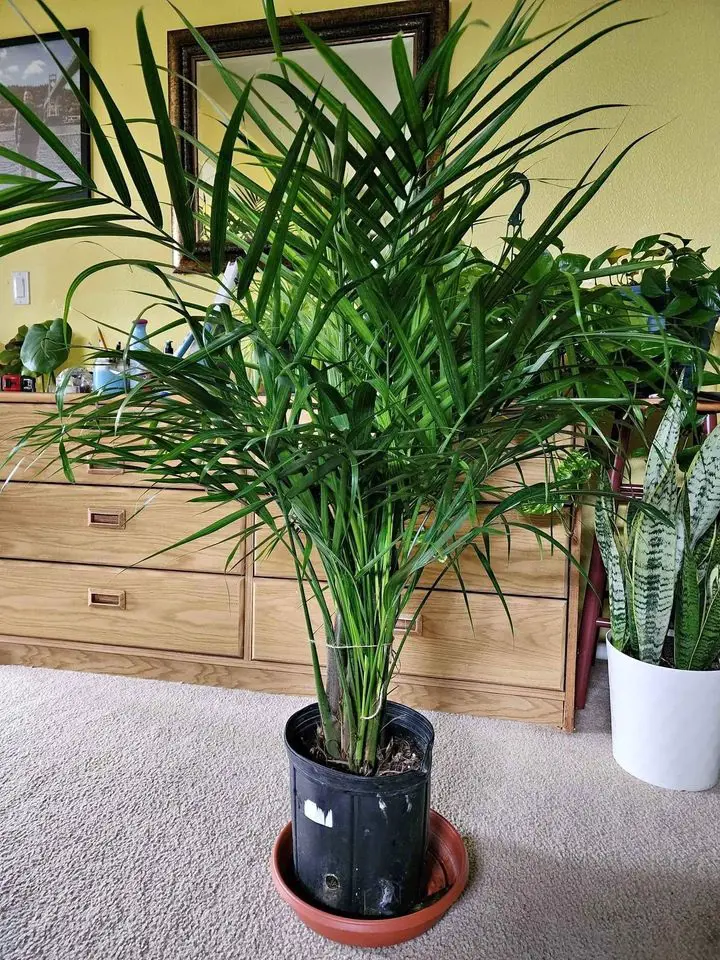
Majesty Palms do best in places with bright, direct sunlight where the sun's rays come straight in. They can also adapt to spots with bright, indirect light where the sunlight is more scattered. Avoid putting them in areas with low light or no natural sunlight.
For a thriving Majesty Palm, choose a spot with plenty of bright light. While it prefers indirect sunlight, don't place it in areas with too much direct sun exposure, like south or east-facing windows indoors. If you have it outdoors in the summer, Majesty Palms are great for shaded decks, patios, or balconies.
Temperature
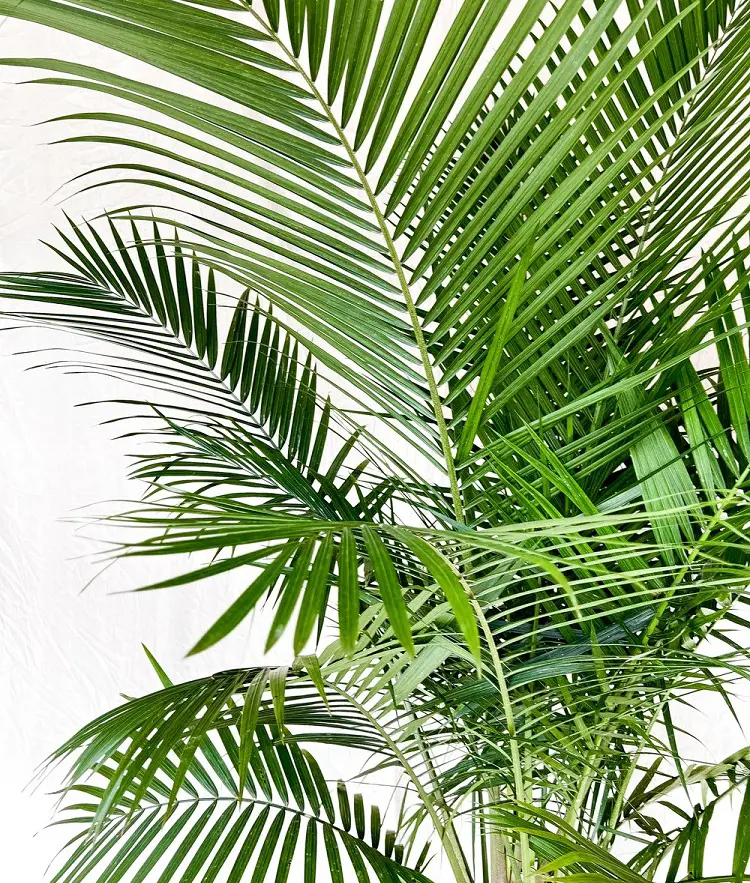
Majesty Palms thrive best in temperatures ranging from 65°F to 75°F (18°C to 24°C), as they naturally prefer warm environments due to their tropical origins. Keep your palm in this temperature range to ensure it remains stress-free.
While it can tolerate colder temperatures down to 50°F to 60°F (10°C to 15°C) in winter, going below that may cause harm. Provide extra insulation for your indoor palm during colder months and make sure it's not near cold drafts or heating vents, as these can lead to physical damage.
Soil
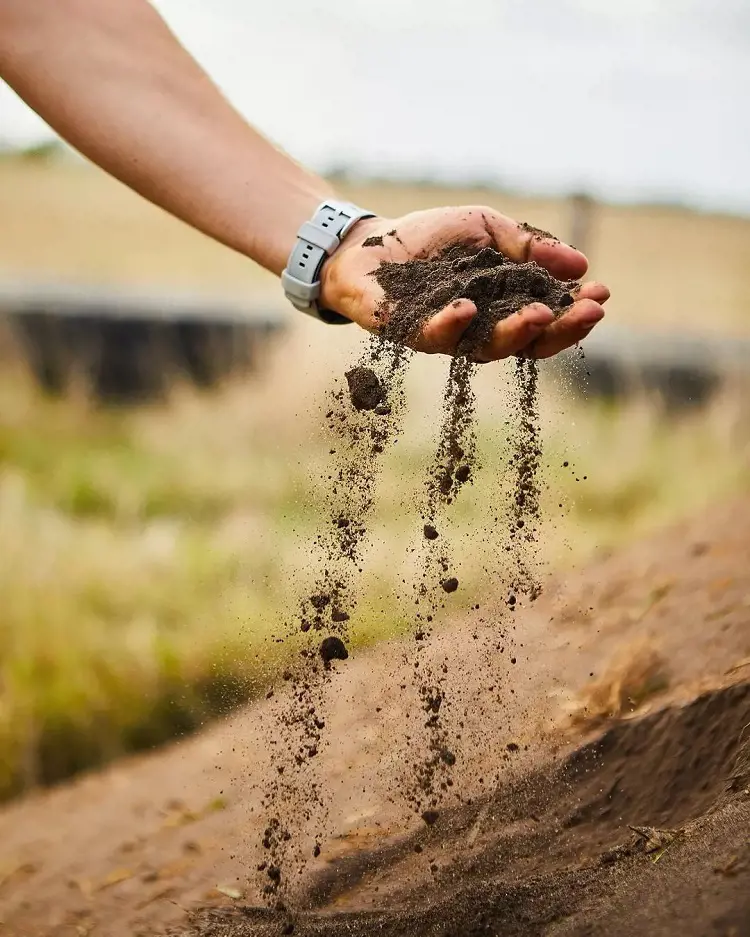
Majesty Palms need specific soil to stay healthy. They prefer soil that drains well, is light, and slightly acidic to avoid overwatering and potential root rot. A good soil mix includes peat or coco coir, perlite, and pine bark.
This combination ensures the right moisture balance and allows the roots to get enough air. While Majesty Palms likes consistent moisture, it's crucial not to let the soil become too wet. The pot or container for your palm should have holes at the bottom for drainage, preventing excess water from accumulating.
Using well-draining soil and a container with proper drainage helps your Majesty Palm maintain the right moisture levels and prevents issues like root rot caused by too much water.
Watering
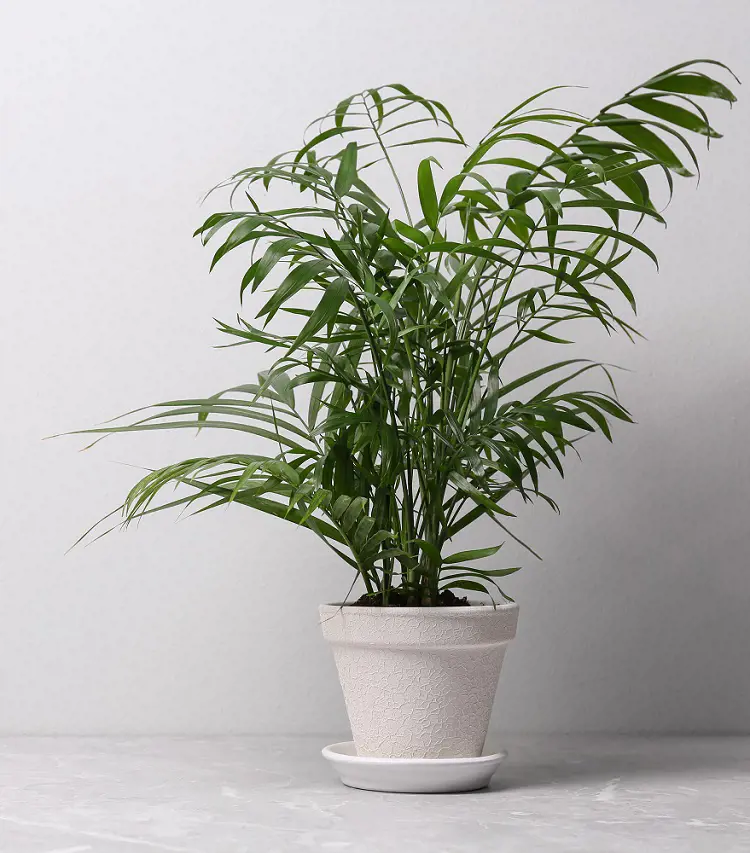
Properly watering Majesty Palms is essential for their well-being, as they like consistent moisture but are sensitive to getting too much water. To check if it's time to water, feel the top inch of the soil; if it's dry, it's watering time. Majesty Palms prefers steady soil moisture but avoids letting it get waterlogged.
When it's time to water, use room-temperature water to avoid shocking the plant. Also, ensure water drains out from the bottom of the pot to reach the roots. Be patient, and let the water soak through. The watering frequency depends on factors like temperature, humidity, and pot size.
During the active growing season in spring and summer, you might need to water your Majesty's Palm more often. Reduce watering when the plant is not actively growing in the cooler months.
Humidity
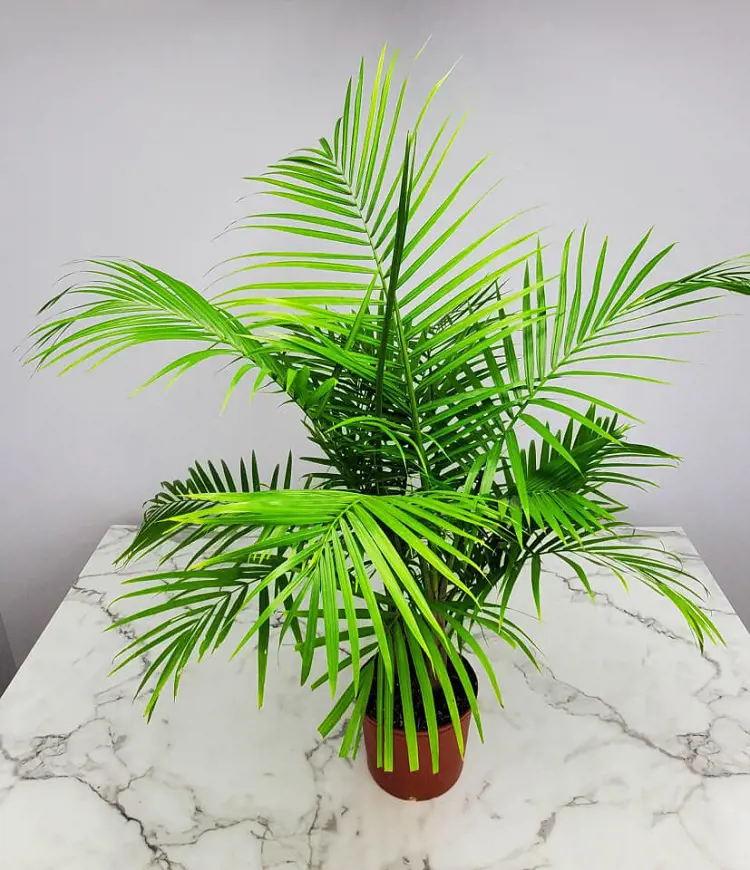
Maintaining an ideal humidity level of at least 50% is crucial for Majesty Palms. Indoors, where the air tends to be drier, you can enhance humidity by placing a tray with water and pebbles near your plant. As the water evaporates, it increases the local humidity.
Another effective method is using a room humidifier to keep overall room humidity high. This is beneficial not only for your palm but also for other plants and your comfort in dry environments. Additionally, give your tree's fronds a mist with room-temperature water regularly to provide a brief boost in humidity.
However, in dry indoor conditions, misting alone might not be enough.
Fertilization
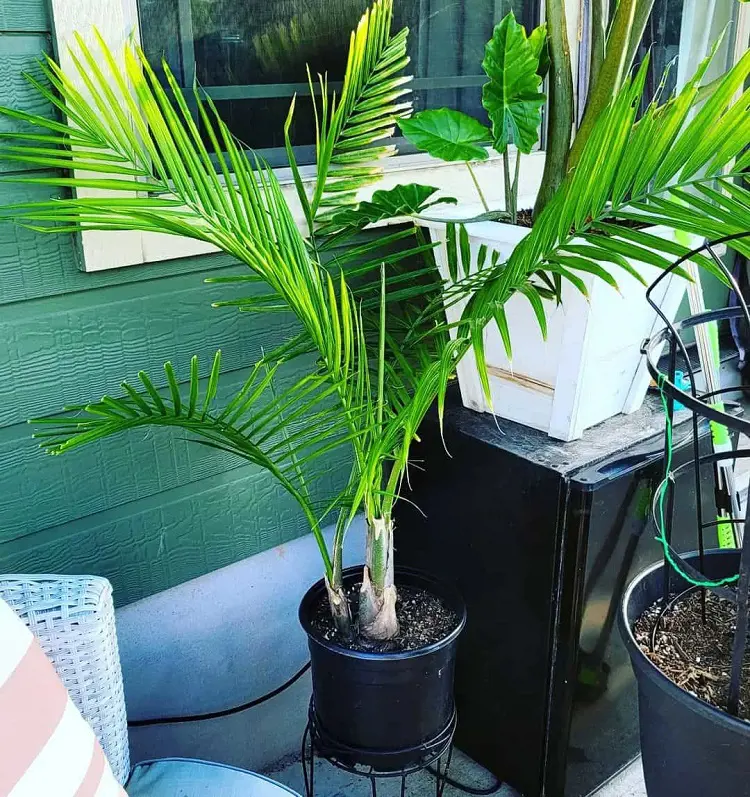
In spring and summer, when your tropical Majesty Palm is in its active growth phase, it appreciates regular feeding. Choose a balanced, water-soluble fertilizer and apply it every 4-6 weeks. But, be careful not to overdo it, as too much fertilizer can cause salt to build up in the soil, potentially harming your plant.
Think of it like giving your palm a nutrient boost every few weeks when it's actively growing, but don't go overboard to ensure a healthy and happy Majesty Palm in your indoor oasis.
Potting and Repotting
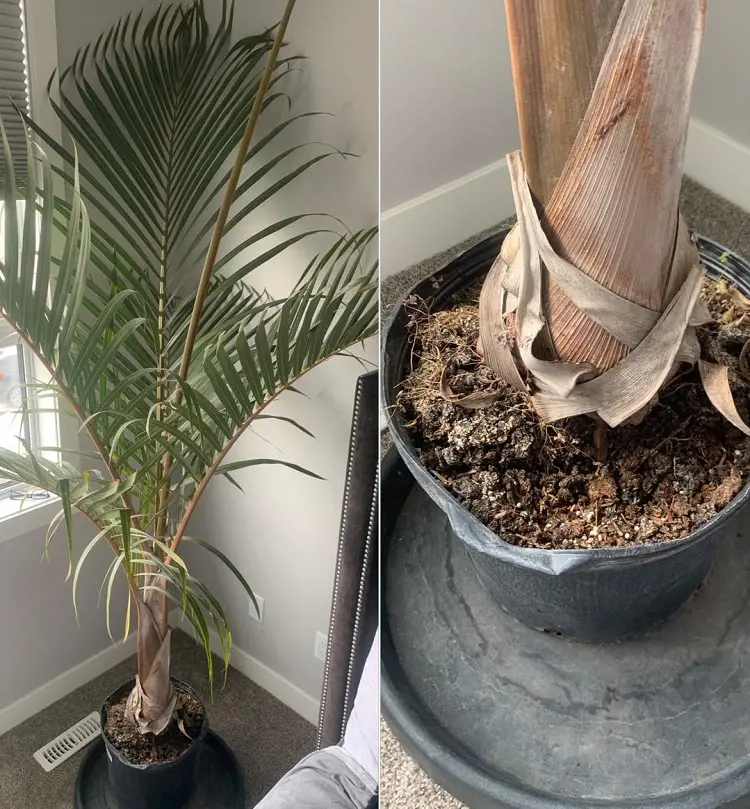
You might need to repot your Majesty Palm every year or every other year since it grows slowly. When repotting, be gentle to avoid harming the root ball, and use a big, sturdy container to prevent tipping. Clay or ceramic pots provide stability, especially since these plants can become top-heavy.
A mix of standard potting soil with added peat moss makes a good growing medium. In colder areas, it's common to move these plants between outdoor patios and indoors with changing seasons. Ensure your plant is inside before freezing weather hits to keep it healthy and thriving.
Pruning
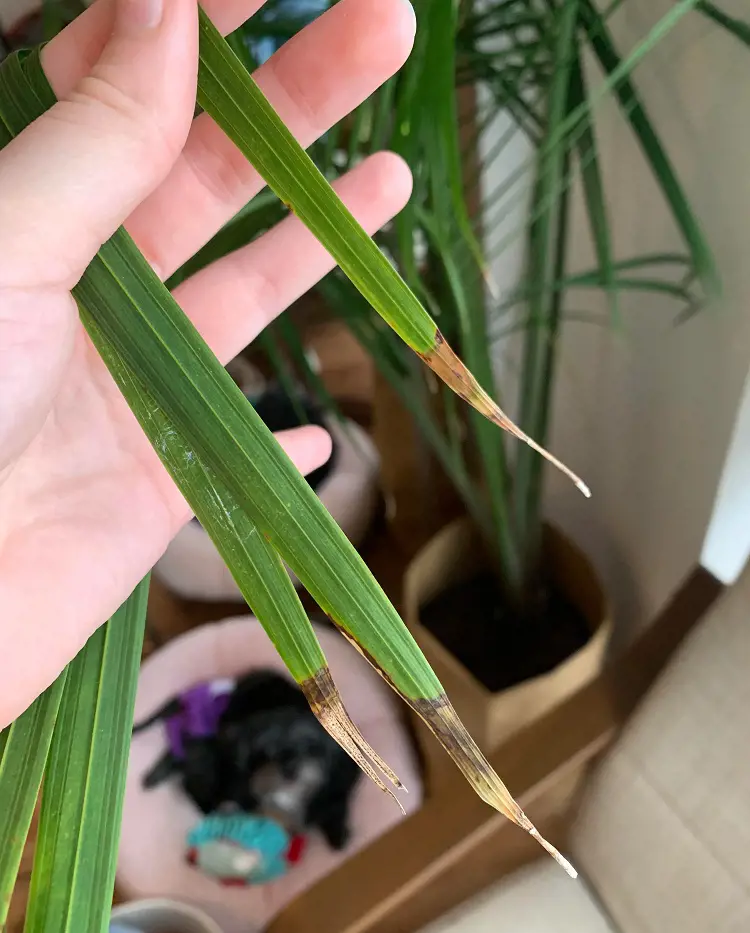
Regularly remove old or damaged leaves to maintain their appearance. Think of it like giving your palm a little haircut; getting rid of the tired, discolored leaves helps the plant focus on growing vibrant and lush foliage.
This simple pruning routine not only keeps your Majesty's Palm looking beautiful but also promotes its overall health, ensuring a vibrant and thriving addition to your indoor space.
Pest Control
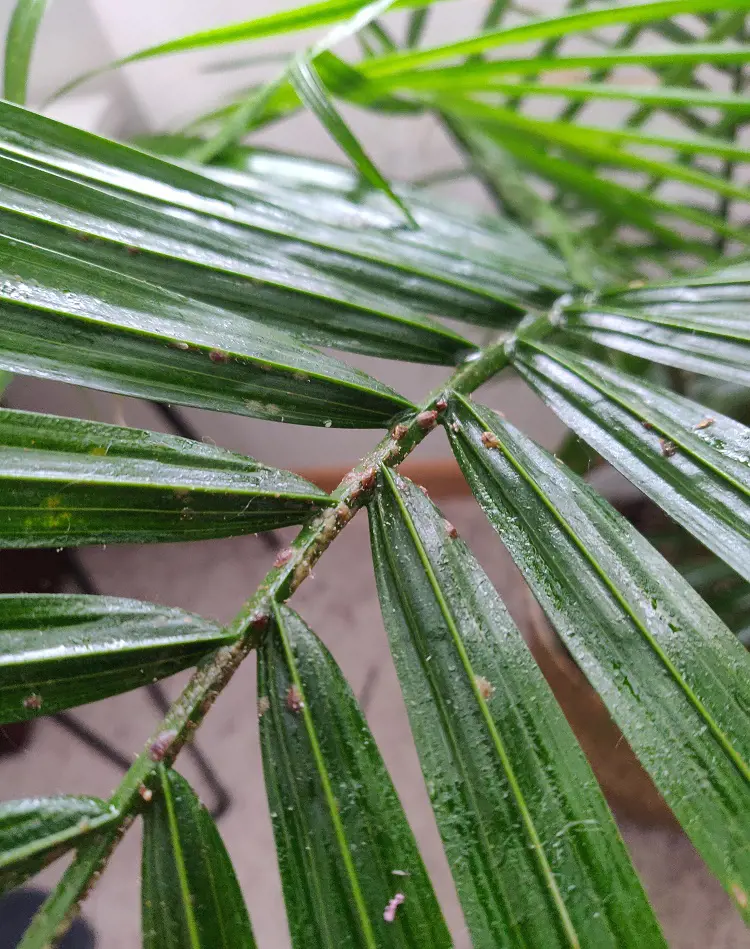
Watch out for spider mites and scale insects, which are common pests for Majesty Palms. To keep them at bay, wipe the leaves with a damp cloth to get rid of any dust. If you spot pests, like tiny spiders or scales, treat them using insecticidal soap or neem oil.
It's like giving your palm a little spa treatment; cleaning off the dust and keeping those pesky bugs away. This simple care routine ensures your Majesty Palm stays healthy and free from unwanted visitors, making it a happy and thriving part of your indoor space.
Water Quality
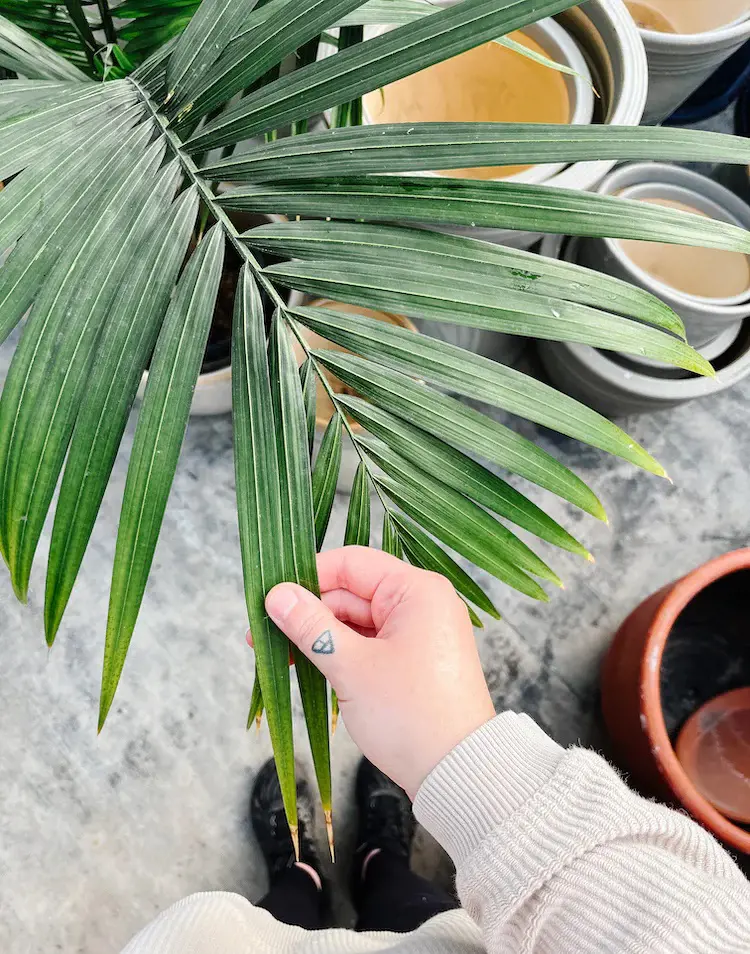
When watering your Majesty Palm, make sure to use room temperature water. These palms are sensitive to fluoride and other chemicals often present in tap water. If you're using tap water, let it sit for 24 hours before watering.
This ensures that any potentially harmful chemicals evaporate or settle, providing your Majesty Palm with water that won't cause any stress or harm. This simple step contributes to the overall well-being of Your Majesty Palm in your indoor garden.
Propagation
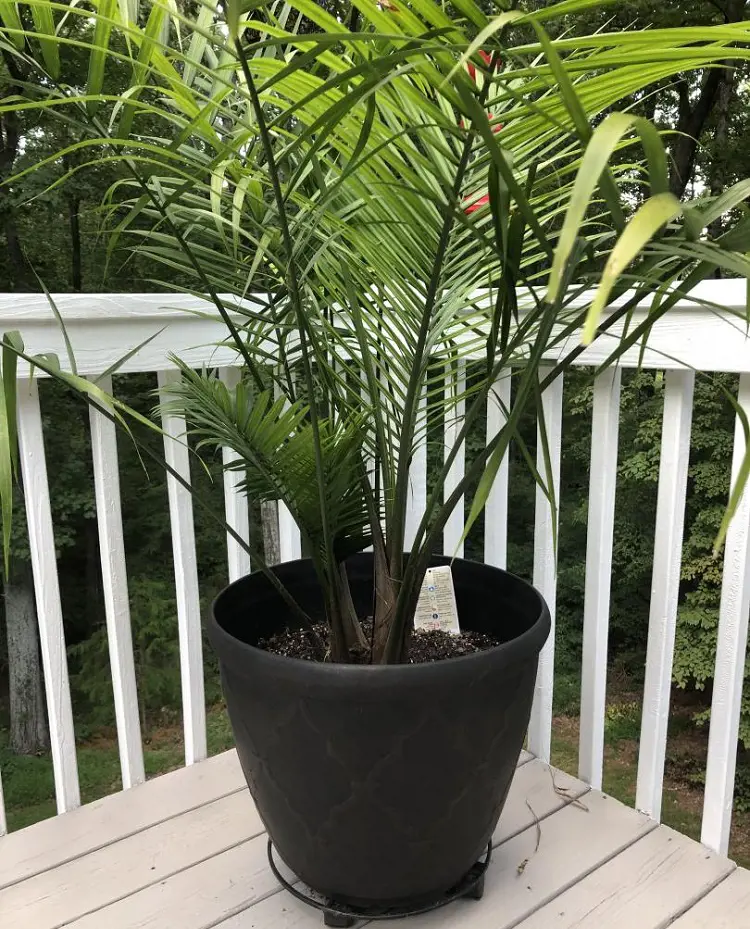
Majesty palms are typically grown from seeds, but accessing seeds for home growers is challenging. Propagation through stem cuttings is not feasible. However, division, separating the pups or offsets from the mother palm, offers a viable alternative. This is best done during repotting to minimize stress on the plant.
Here's how:
- Gently roll the plant out of its pot, avoiding yanking it upright.
- Identify pups or offshoots from the mother plant that can be separated.
- Massage the root ball to loosen it, untangling the pups. Use a disinfected knife if needed, and trim roots if too long for new pots.
- Place offshoots in pots with well-draining soil. Water until it drips from the bottom, avoiding sitting in water.
- Put pots in a bright spot, similar to the mother plant. Fertilize the baby palms after about a month.
This method allows you to expand your Majesty's Palm family without relying on seeds or cuttings.
Rotation
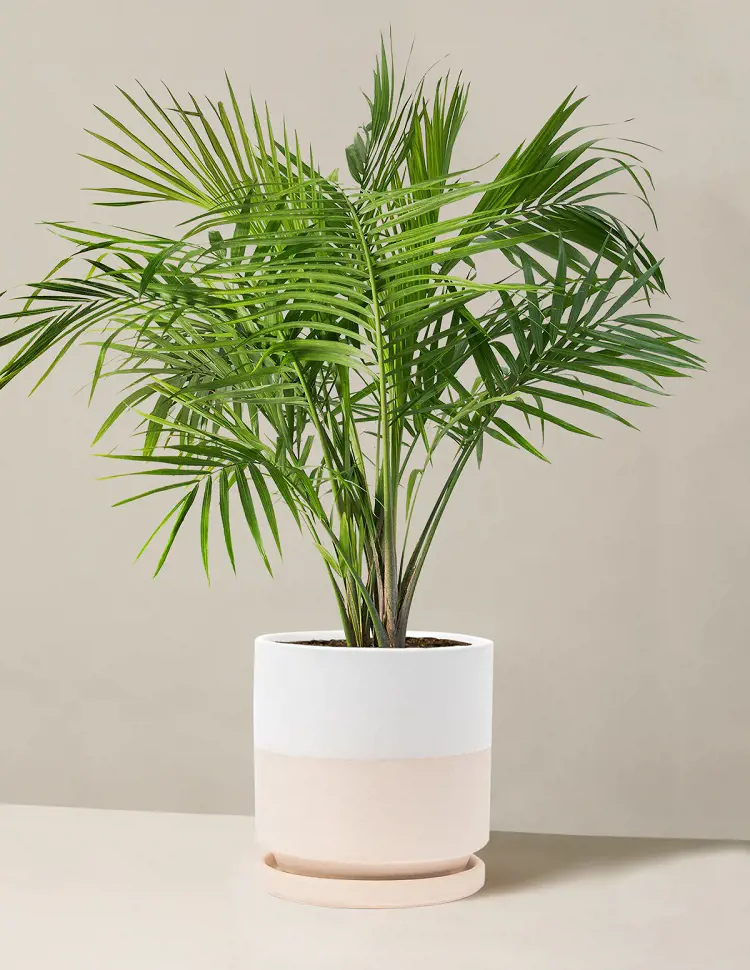
When you have a Majesty Palm indoors, it's like giving it a little spin every now and then. Rotating the plant ensures that all sides get their fair share of light, helping it grow evenly and look balanced. Think of it as turning the palm to face different directions so that every part gets a chance to soak in the sunlight.
Just like how we need to move around for sunlight, your indoor palm appreciates a little spin to ensure it stays healthy and beautifully symmetrical.
Problems With Majesty Palms While Growing
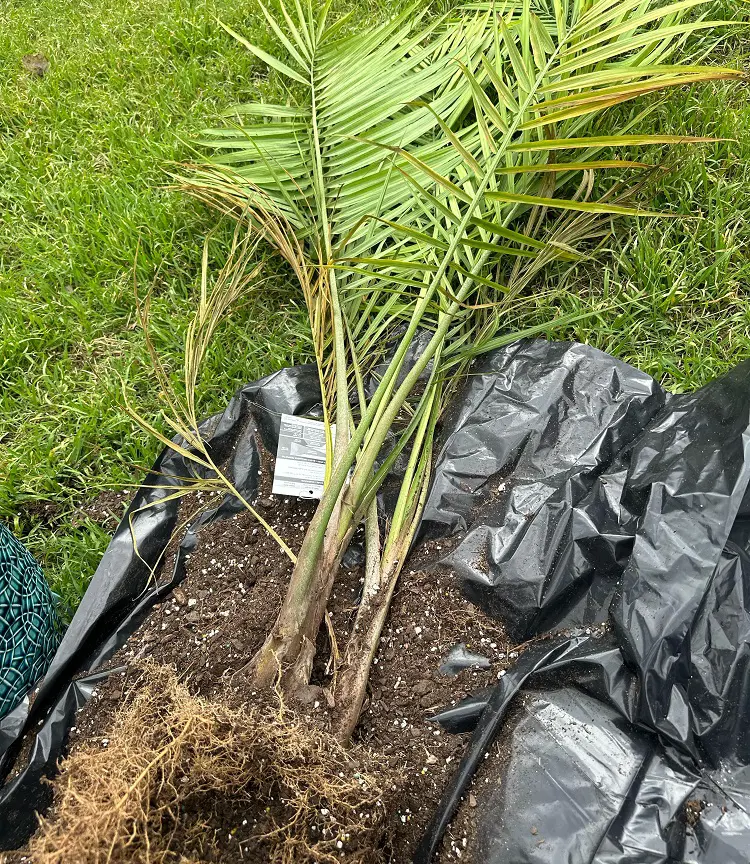
If your Majesty Palm isn't looking as green and happy as usual, it's like the plant is telling you something is not right. The leaves changing color is its way of showing that it's not doing well. Here's a simple breakdown of why Your Majesty Palm might not be as vibrant:
1. Yellow or Brown Fronds: May indicate nutrient deficiencies, improper watering, or inadequate light.
2. Root Rot: Caused by overwatering or poor drainage, leading to fungal issues affecting the roots.
3. Wilting or Drooping Fronds: Can result from underwatering, overwatering, or inadequate humidity.
4. Brown Tips on Fronds: This may be due to low humidity, drafts, or inconsistent watering.
5. Stunted Growth: Inadequate light, nutrient deficiencies, or improper care can hinder healthy growth.
6. Soil Compaction: Dense, compacted soil can restrict root growth and nutrient absorption.
7. Yellowing Due to Nutrient Deficiency: Lack of essential nutrients can lead to yellowing of fronds.
8. Leaning or Unbalanced Growth: Uneven exposure to light can cause the plant to lean or grow unevenly.
Addressing these issues promptly with appropriate care and adjustments can help maintain the health and vitality of Majesty Palms.
How Big Do Majesty Palm Plants Grow?
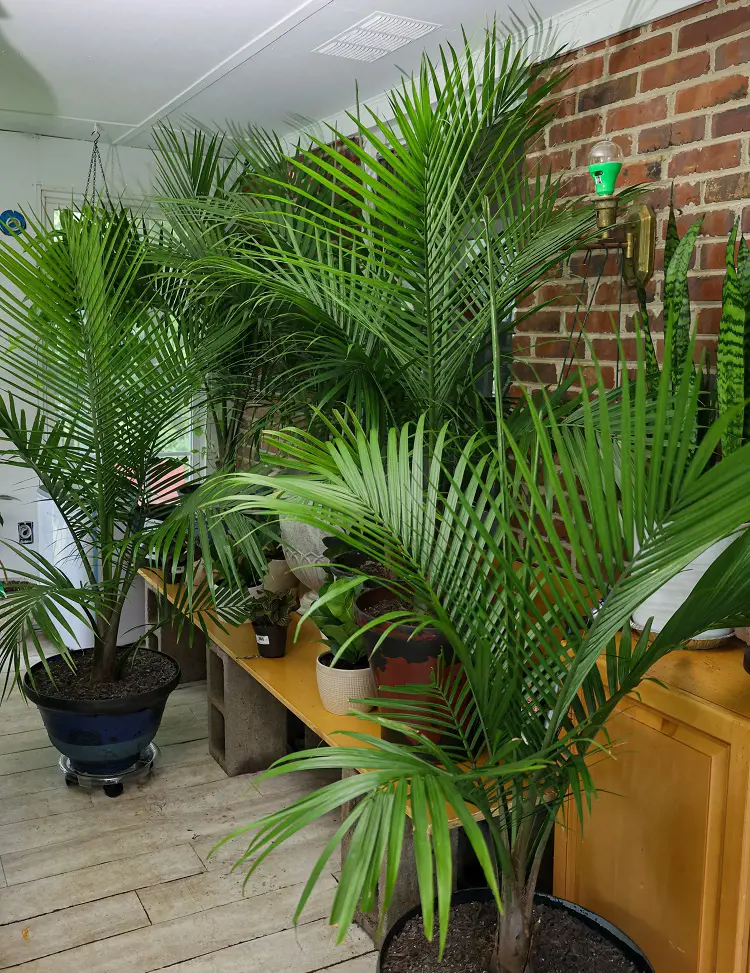
Majesty Palms exhibit slow and steady growth, adding about one foot annually and reaching a height of eight to ten feet making it perfect as tall indoor plants for home. In its natural outdoor habitat, this palm can achieve impressive heights of up to 80 feet, with fronds spanning 8 feet.
While it takes time for Majesty Palms to reach their full 10-foot height, the growth rate slows as energy shifts toward developing deep roots to sustain their broad fronds. Around 15 years old, these palms typically reach maturity, showcasing their majestic size and readiness to thrive for an extended period.
Are Majesty Palm Toxic for Pets & Kids?
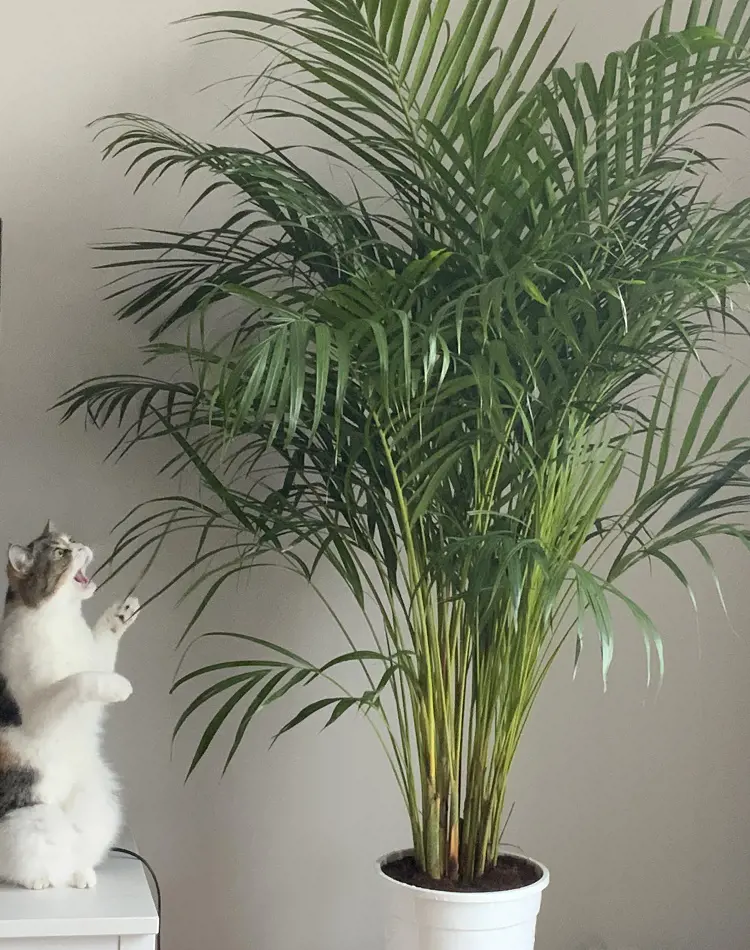
Majesty Palms are generally considered non-toxic and safe for pets as well as kids. They are commonly used to enhance home decor without posing harm. It's recommended to keep the plant's leaves dust-free to prevent accidental ingestion of dirt particles.
While Majesty Palms are non-toxic, as a general precaution, it's advisable to keep plants out of reach of small children and pets to avoid any potential accidents. This ensures a safe and enjoyable environment for everyone in the household.
Recent posts
Plant Care
Plant Care
How To Take Care Of An Orchid Plant? 11 Tips And Tricks
If you love gorgeous orchids but are worried they're too high-maintenance, don't worry. This guide is like a cheat sheet for orchid newbies. Forget fancy words and confusing schedules — we're talking about how to take care of an orchid pla...
Plant Care
How To Grow and Care For Peace Lily Plant
The Peace Lily is an indoor plant that is most valued for its beautiful and shiny green leaves as well as the white blooms. Hard and tolerant, it’s naturally a low-maintenance addition to your plant collection. If you are confused, let us tell ...
Plant Care
Pothos Plant Care And Growing Guide
Adding a Pothos plant (Devil’s Ivy) to your home benefits the environment and aesthetic of your personal space. It's easy to maintain and is loved for it's ability to enhance indoor air quality by removing toxins like formaldehyde, benzene, and...
Plant Care
Snake Plant Care and Growing Guide
Snake plants require low maintenance, and low light and are almost impossible to kill, making them a perfect plant for beginners and seasoned gardeners. In this guide, we will explore essential care tips and optimal growing conditions for snake plant...
Plant Care
How To Grow And Care For A Hosta Plant
Hosta plants are widespread perennials, often grown for their beautiful and diverse foliage. They are extremely easy to care for and can thrive in various conditions, particularly shade or semi-shade. These hardy plants can last for many years and re...
Plant Care
Reasons Why Tomato Leaves Are Turning Yellow
If your tomato leaves are turning yellow, it's a cause for concern when you've put effort into growing them for that homegrown, delicious taste. The yellowing could result from various issues affecting your kitchen garden aspirations. Our guide simpl...
